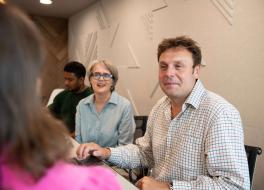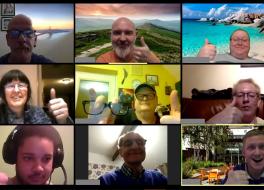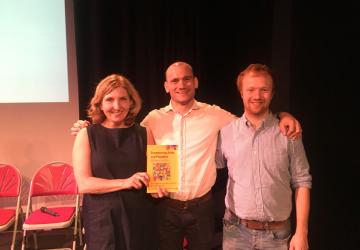

A day exploring 'Stammering Pride'
1st October 2019
A report on the 'Stammering Pride & Prejudice' book launch at the City Lit this September.
What is 'stammering pride'?
At the event organised to launch the new book 'Stammering Pride & Prejudice: Difference Not Defect', co-editors Sam Simpson and Patrick Campbell welcomed the audience and showed a video of the late Mike Oliver introducing his 'social model of disability', the concept at the heart of their new book. Mike was confined to a wheelchair after an accident in his teens and when later starting university, he found campus life inaccessible. Mike initially saw it as his responsibility to get up stairs and through closed doors but then started to realise it was the university that should be making things more accessible for him.

From this, he devised the 'social model of disability'. The social model is the view that people are impaired or disabled not by their physical conditions, but by an intolerant society that excludes and discriminates against them. Seeing disability as a human rights issue rather than a medical one, it aims to remove barriers that restrict life choices for people with disabilities. (Watch Mike's video.)
Relating it to stammering, Patrick described his shame growing up, which he decided was shaped by society’s prejudice towards his stammer. The problem, he asserted, isn’t with us: stammering shouldn’t be something that we should 'fix' — society should change its attitude towards it. This concept of 'Stammering Pride' had been growing, with more and more people on social media talking about feeling more emboldened to challenge this prejudice.
Networks and Ed Balls Q&A
Iain Wilkie and Walter Scott talked about setting up networks within their organisations (accounting and armed forces respectively) that follow the model by making things more accessible for people who stammer. Although we're not a tipping point yet, Iain said, things are changing; employers are more open to differences but it's up to us to open up these conversations.
Next up was a Q&A with Ed Balls, talking about the prejudice he faced as Shadow Chancellor when someone in Parliament commented, "He's supposed to be Secretary of State but he can't even get his words out". Because of his initial reluctance to talk about stammering, Ed was shamed by a parent who called him a coward for not speaking out and giving children confidence. Since then he started talking about it more and became liberated as a result. "We all get trapped by the idea that we have to aspire to fluency." However, Ed did admit to struggling with the social model concept, arguing that the therapy he received helped his confidence grow.

Stammering 'gain'
After lunch, Chris Constantino said, "When we don't let ourselves stammer and do things to avoid it, speaking can be hard. We need a reason to stammer and to disagree with a society that says 'don't stammer'".

What is that reason? Is there a stammering 'gain'? Chris argued there was and to discover it we need to be present in the moment of stammering. He said most interactions are mere pleasantries: small talk to avoid really talking to one another. But when we stammer and lose control we are exposed and vulnerable, like being naked. Our instinct is to cover up and protect ourselves but the more you are naked, the greater the chances of intimacy. Therefore the more we stammer openly, the more we invite others to join us and more meaningful, deeper conversations can be had. "Stammerers have an avenue to intimacy that fluent speakers can lack." Question from the audience: "What if that vulnerability isn't shared by another?" Chris: "Don't take responsibility for that person — it's not a result of your personal failure."
Addressing mixed messages
When chatting with a few speech and language therapists (SLTs) over lunch, I learnt that the social model has caused quite a stir in the therapy world, conflicting with the traditional clinical approach to stammering. This was neatly addressed in a panel discussion with several SLTs and Dori Holte, a parent of a stammering child who set up the largest Facebook support group for parents of stammering children. They were debating how to reconcile the different messages to give parents: is stammering something to be 'fixed' or should they instead be told it's okay to stammer and to help children live more easily with stammering?
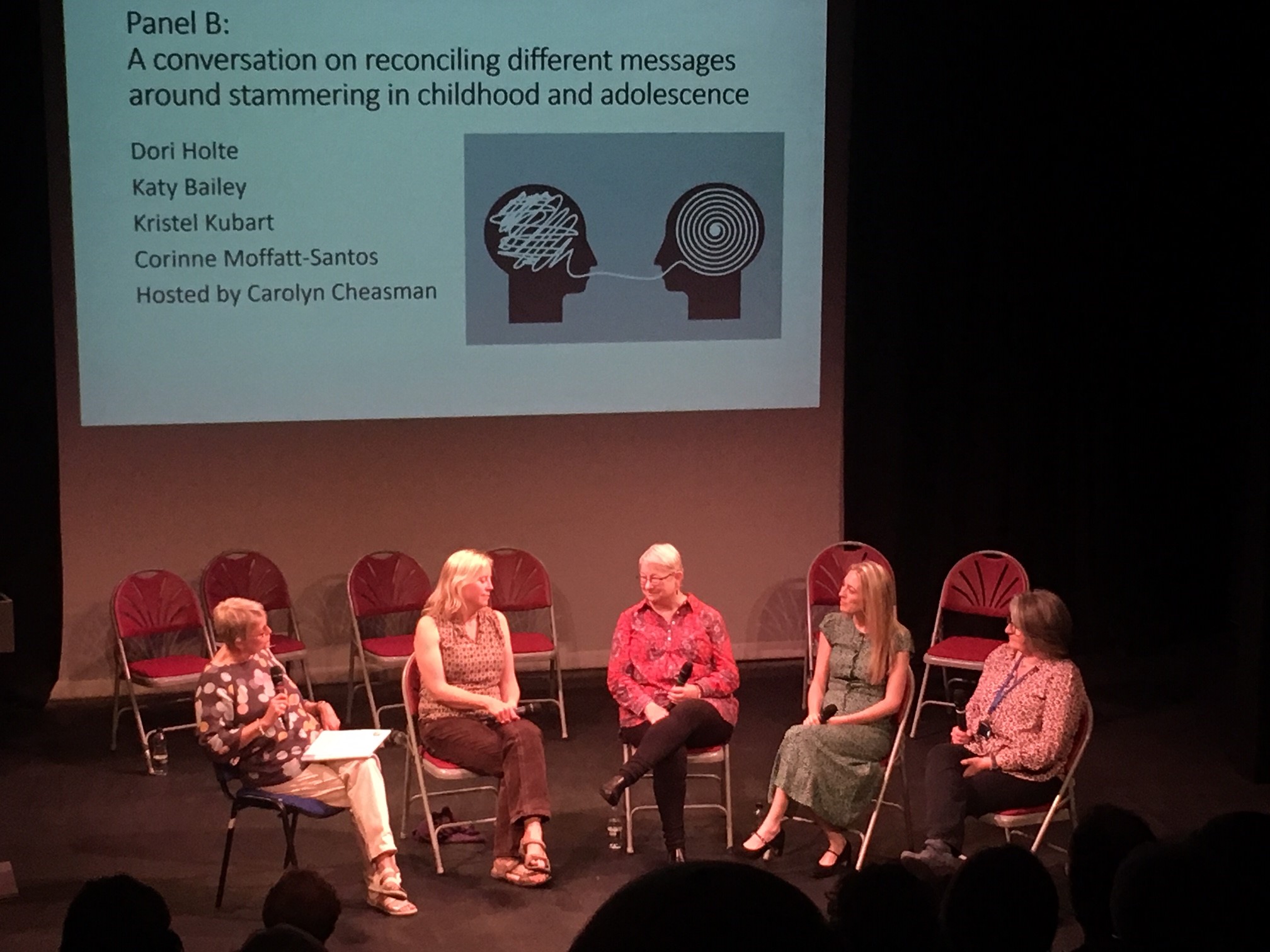
Dori said that parents are told there's this 'window' between the ages of 2 and 5 where if they act quickly and get the right therapy, their child's stammer can be 'fixed', which can cause parents a lot of panic and anxiety.
Another panelist said that SLTs should work with parents, not just the child, empowering them with the ability to help. Overall there needs to be a paradigm shift, a rethinking of their roles as SLTs; seeing stammering against a bigger backdrop. But someone argued that if traditional therapy can ease a child’s struggle, then they’ll be able to do more and feel more confident. The debate goes on.
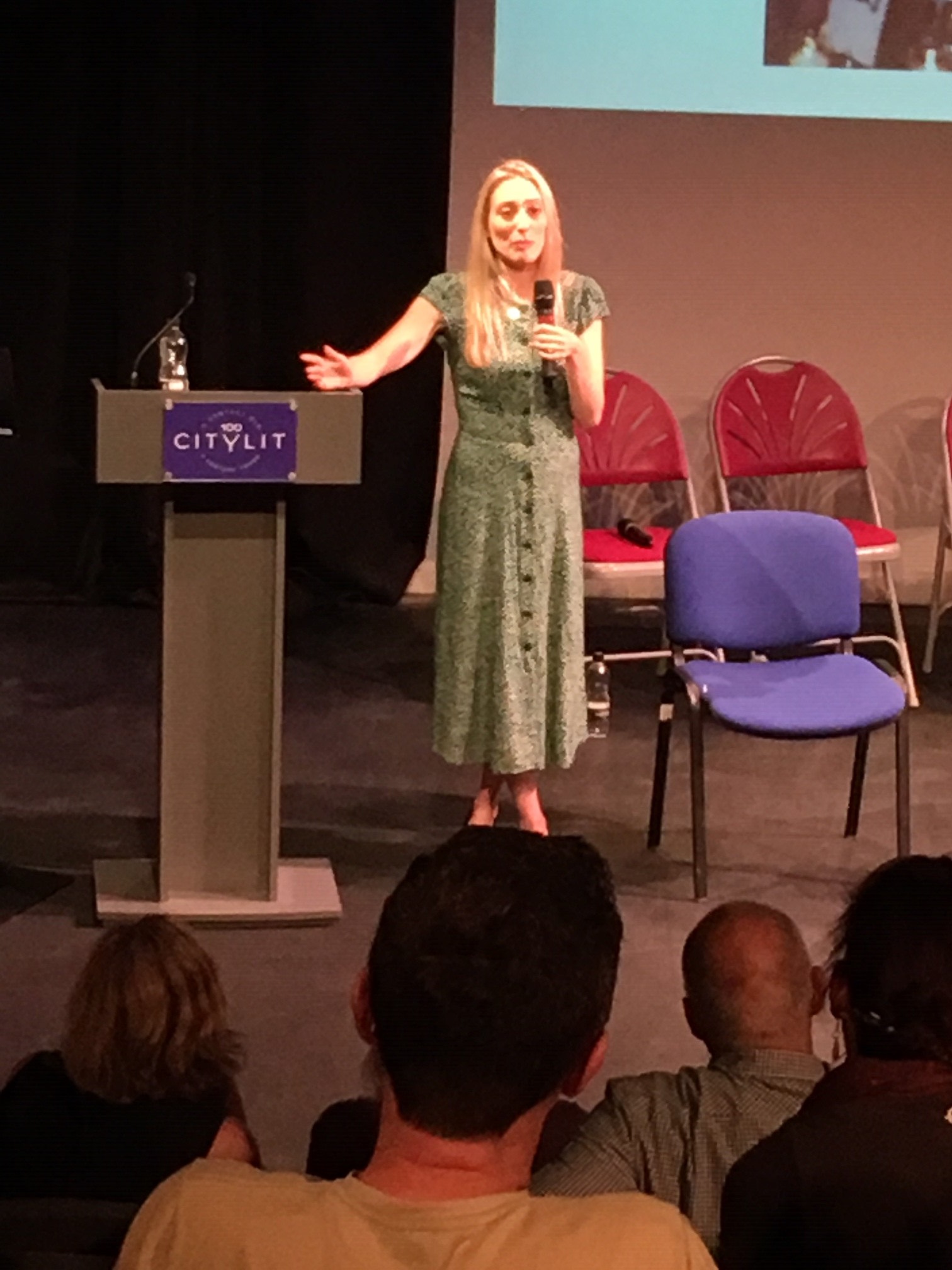
Celebration
The final session was a celebration of stammering from speakers who have challenged the status quo. Kristel Kubart, who has cerebral palsy as well as a stammer, talked about the feeling of accomplishment when doing something she’s afraid to do. Wendy Ronaldson shared her artwork which, through self-expression, helped her break free from a covert stammer.
Josh Walker told how narrative therapy - changing his own narrative of his stammer — helped him realise he had the power to shape his own reactions. "The problem was having a problem with the problem." Nisar Bostan read a piece about the dichotomies in his head: "The grey matter meshed with 'should it even matter'?"
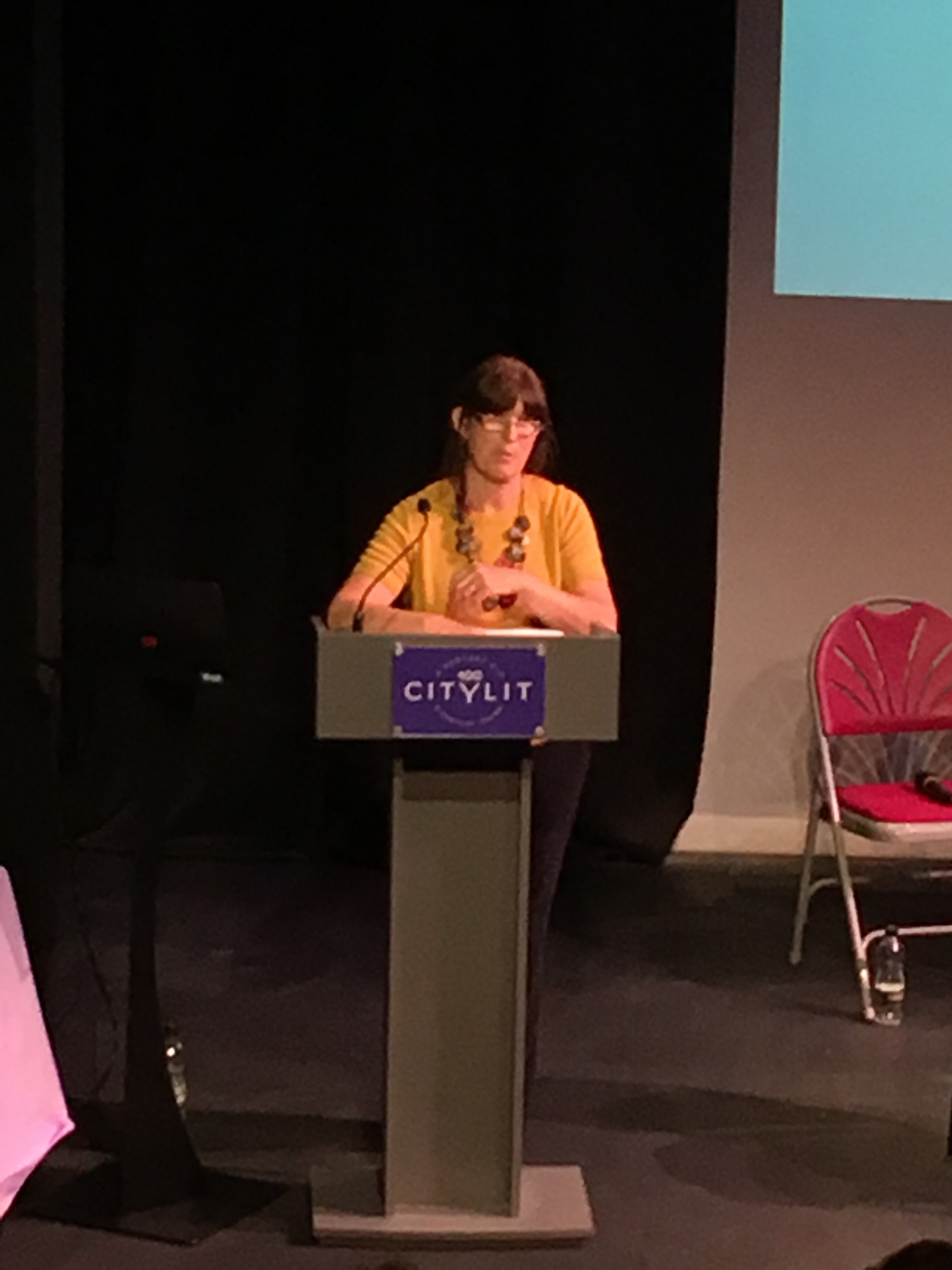
By the end of the day I felt inspired but wondered how I could put all this into daily practice. Luckily this question was put to the panel in the closing Q&A from an audience member. "Dare to stammer," was the reply. "Let's hear more dysfluency; don't look away from someone in the moment of stammering — that spreads awareness." Someone else said, "It’s about being open, positive and optimistic. It's not about fluency but good communication. That's the message to give parents help them to open their eyes about the possibility of stammering."
What do you think about the social model and stammering pride? Does it inspire you or do you have your reservations? We'd love to hear from you — write something for our site by clicking here.
The book 'Stammering Pride & Prejudice: Difference Not Defect', by J&R Press, is on sale now and you can buy it here. Read about the inspiration behind it in co-editor Patrick Campbell's article for our site, 'The Origins of Pride & Prejudice'.
(Main picture: Co-editors Sam Simpson, Chris Constantino and Patrick Campbell)








